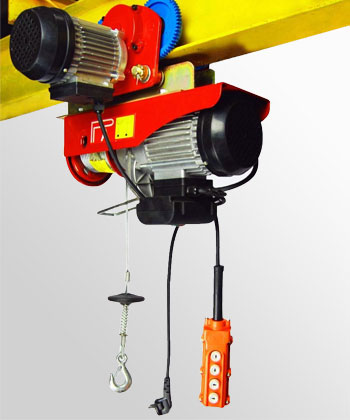Wire rope is a type of cable which consists of several strands of metal wire laid (twisted) into a helix. The term cable is often used interchangeably with wire rope. However, in general, “wire rope” refers to diameters larger than 3/8 inch (9..52 mm). Sizes smaller than this are designated cable or cords.[1] Initially wrought iron wires were used, but today steel is the main material used for wire ropes. S S power transmission products is the trusted name in electric wire rope hoist manufacturing & supply.
Historically wire rope evolved from steel chains, which had a record of mechanical failure. While flaws in chain links or solid steel bars can lead to catastrophic failure, flaws in the wires making up a steel cable are less critical as the other wires easily take up the load. Friction between the individual wires and strands, as a consequence of their twist, further compensates for any flaws.
Wire ropes were developed starting with mining hoist applications in the 1830s. Wire ropes are used dynamically for lifting and hoisting in cranes and elevators, and for transmission of mechanical power. Wire rope is also used to transmit force in mechanisms, such as a Bowden cable or the control surfaces of an airplane connected to levers and pedals in the cockpit. Static wire ropes are used to support structures such as suspension bridges or as guy wires to support towers. An aerial tramway relies on wire rope to support and move cargo overhead.

